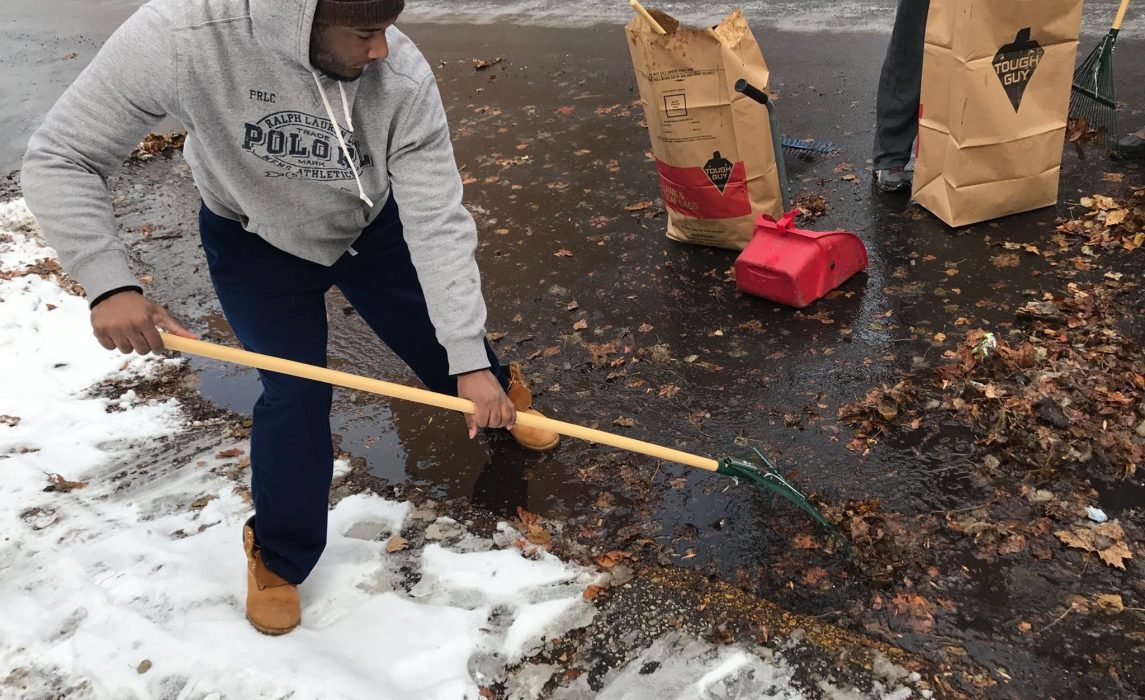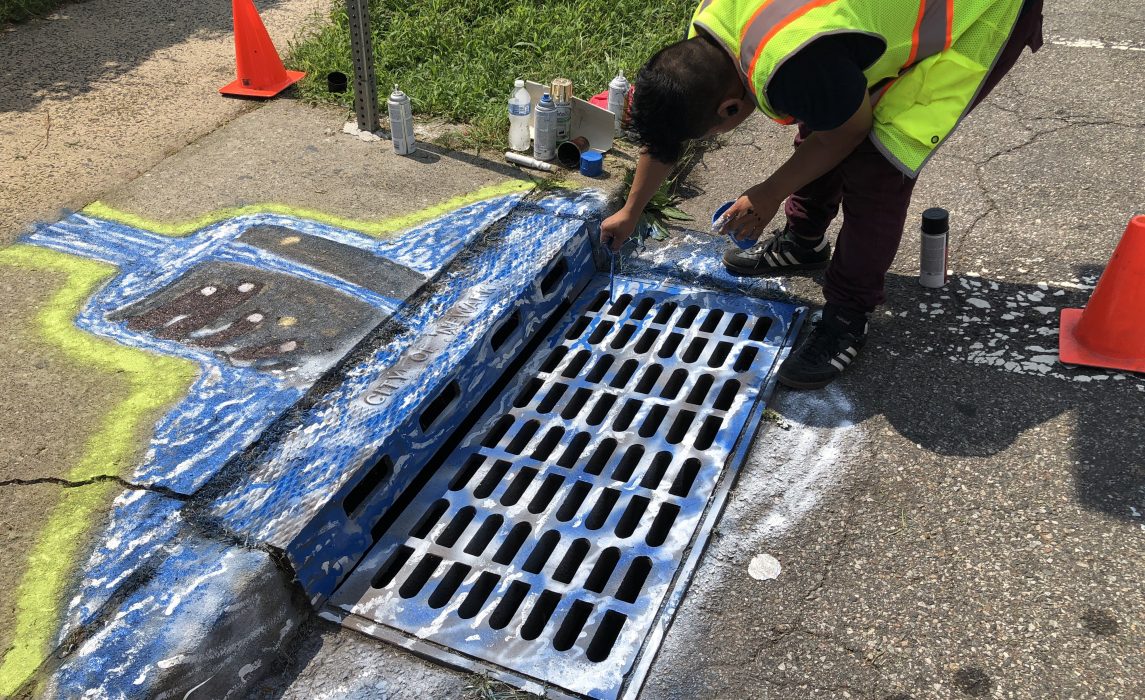Flood Mitigation in Newark through Prepared Together
The Problem
The City of Newark suffers from severe street flooding, which is exacerbated by limited green space and impervious surfaces that cover 70% of the city.
- The street flooding is primarily caused by stormwater runoff quickly overwhelming the city’s antiquated drainage and sewer infrastructure, which combines stormwater and wastewater in the same pipes.
- The city also experiences above average temperatures due to urban heat island effect, caused by the dense urban infrastructure and lack of green spaces and trees throughout the city. This results in temperatures more than 10 degrees warmer in the city than its suburban neighbors.
- Many low-income communities lack the necessary resources and support to respond to disasters such as flooding.
The Solution
The Cities of Service Prepared Together program in Newark addressed the problems with a variety of approaches, including both community-driven green infrastructure projects and a series of education workshops for residents.
- AmeriCorps VISTA members and city staff recruited and trained citizens to install rain barrels, plant trees, and create rain gardens and other green infrastructure throughout the city, which reduced the amount of rainwater entering the combined sewer system.
- The city also made a concerted effort to keep sewer drains free and clear of litter with an adopt-a-catch-basin program.
- Citizens collaborated with the city to plant trees and paint cool roofs, which are roofs painted white to reflect rather than absorb heat from the sun, to save energy and fight extreme heat in the city.
- City staff and AmeriCorps VISTA members also worked with resident leaders and community organizations to teach more residents about extreme heat and maintaining trees. They held regular tree inventory training to enlist residents to help the city count and better maintain its trees.
The Results
More than 700 Newark residents were involved in Newark’s Prepared Together program, including trained volunteers, students, and employees at partner organizations.
- Beyond simply volunteering their time, 440 individual volunteers were trained with a deeper knowledge of how to make their neighborhoods more resilient and prepared for flooding and extreme temperatures.
- Volunteers helped the city inventory 2,000 trees, enabling them to determine the health and expanse of its tree canopy, and to better plan maintenance and future tree planting efforts.
- Volunteers planted and maintained 30 trees.
- Cool roofs were painted to reduce energy use on three buildings.
- Citizens installed 76 rain barrels to reduce stormwater runoff.
- Residents have adopted 136 catch basins and 640 pounds of debris was removed from the catch basins. Many were also painted by local artists.
Keys to Success
Led by Nathaly Agosto Filión, the Chief Sustainability Officer for Newark, who is committed to working with citizens to address disaster preparedness concerns, the city was able to successfully confront the problem by using a variety of tactics.
- Cities of Service connected Agosto Filión with staff from Cities of Service coalition cities participating in similar efforts to help her brainstorm, solve problems, and generate new ideas.
- The city embedded the Prepared Together work into the city’s larger Sustainability Action Plan to ensure the program continued.
- The City of Newark has since invested additional resources and personnel in preparedness efforts.
I liked the opportunity to beautify the streets and bring awareness to keeping the drains clean through the medium of paint. I was proud to be a part of something positive.
Dee Spencer, artist and Newark resident


